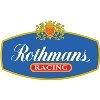SeijaKessen wrote:Thank you for posting that PDF...holy crap it is great. =D>
Agreed !!
that website truly is a GOLDMINE (if you mine it)
it contains answers to my historical question
it agrees with my view on the false god of piston speed limits (and how we got to that)
engages strongly with another hobbyhorse of mine, (writers missing) oversized valves in the recent and distant past
shows that often design moved through fashions
shows us that the 1967 Lotus 49 had insufficient tankage for Monza
but no actual BSFC figures
try it ...... grandprixengines.co.uk

